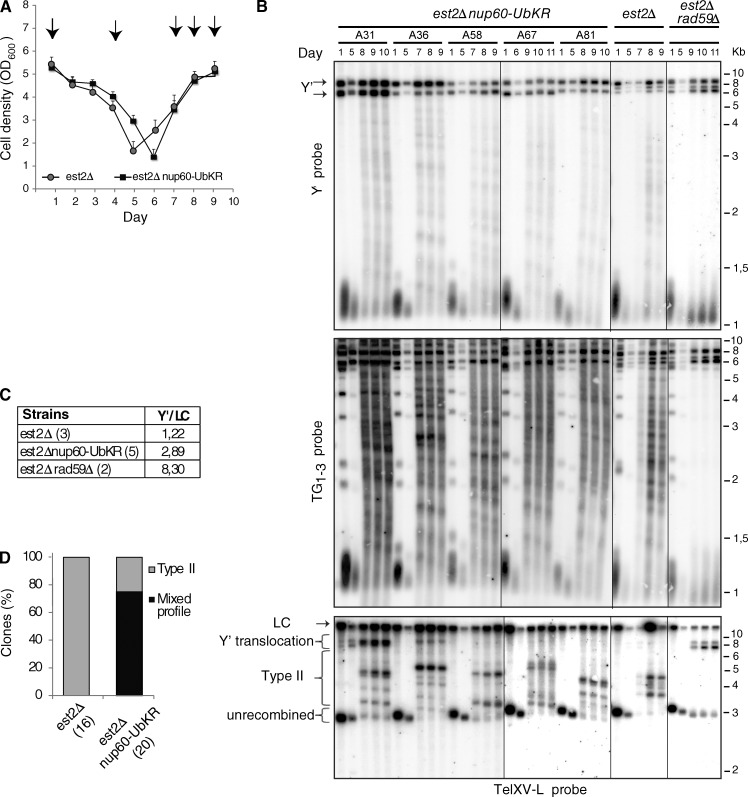Figure 7.
Preventing Nup60 ubiquitylation favors the appearance of mixed survivors upon telomerase disruption. (A) Replicative senescence assays were performed in liquid culture by propagating the cells via serial dilutions to 105 cells/ml every 24 h. Each point represents the mean OD600 value for 17 and 21 independent spores of NUP60 and nup60-UbKR strains disrupted for EST2, respectively. SEMs are indicated for each point. (B) Survivor type for the indicated mutants was determined after DNA digestion with XhoI and Southern blot analysis with subtelomeric Y′ (top), telomeric TG1–3 (middle), and TelXV-L (bottom) probes. Representative clones are shown whose senescence profiles are shown in Fig. S5 B. In the bottom panel, fragments that correspond to Y′ translocations of TelXV-L (indicated by arrows) are larger than the fragments corresponding to Y′ amplifications (tandem Y′s revealed by Y′ probe) because the most proximal Y′ fragment includes an extra subtelomeric sequence (not present in tandem Y's). (C) The intensity of the Y′ elements was normalized to a loading control (LC) corresponding to a nonspecific band obtained with the TelXV-L probe (LC) in several est2Δ, nup60-UbKR est2Δ, and est2Δrad59Δ clones. The mean ratio is indicated for each mutant type. (D) The type of survivor profile is represented for all the NUP60 and nup60-UbKR telomerase minus clones. Mixed refers to the presence of type I and type II survivors in the same culture.

